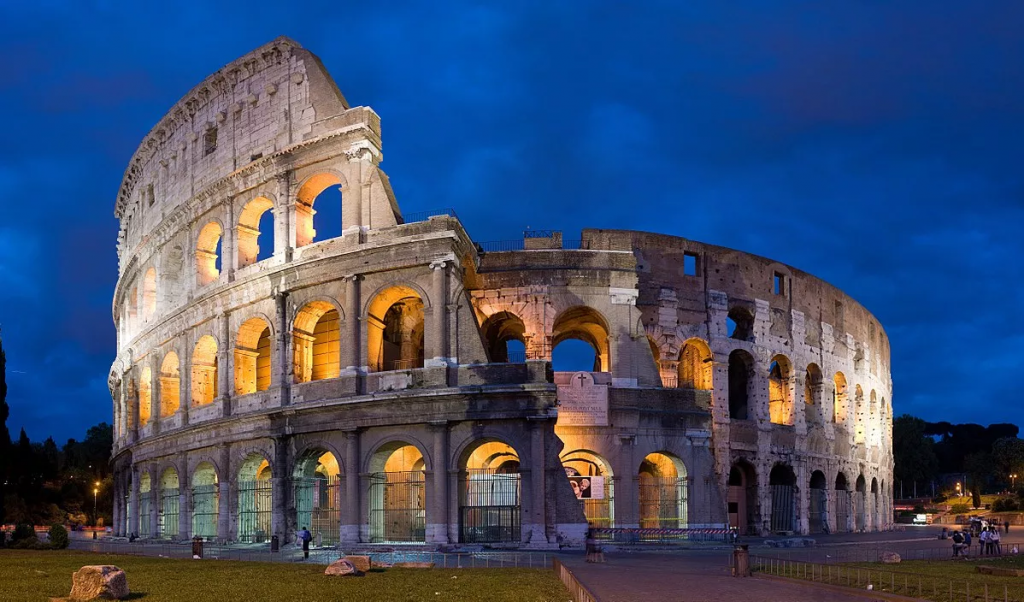Listas y curiosidades
Estos son datos muy interesantes sobre el Imperio Romano.
Uno de los imperios más grandes del mundo tiene algunas cosas interesantes importantes. Mira algunas curiosidades al respecto
Anuncios

La era posrepublicana de la antigua Roma se conoció como el Imperio Romano. Era un estado con importantes posesiones territoriales en Europa, el norte de África y Asia occidental, gobernadas por emperadores.
Fue un principado con Italia como metrópoli de sus provincias y la ciudad de Roma como su única capital desde la ascensión de César Augusto como primer emperador romano hasta la anarquía militar del siglo III.
Más tarde, el Imperio Romano de Occidente y el Imperio Romano de Oriente fueron gobernados por diferentes emperadores que compartían el poder.
Hasta el año 476 d. C., cuando las insignias imperiales fueron transportadas a Constantinopla después de la conquista de la capital occidental de Rávena, la ciudad de Roma siguió siendo la capital formal de ambas regiones.
Con una historia tan vasta, el Imperio Romano tiene algunas curiosidades que quizá no conocías.
Así pues, en este artículo vamos a presentar algunas curiosidades sobre este asombroso imperio.

Datos curiosos sobre los gatos
Unas de las mascotas más elegantes, tranquilas e independientes son los gatos. Veamos algunos datos sorprendentes sobre este asombroso animal.
#1
La leyenda de Rómulo y Remo es falsa.
Lo más probable es que a Rómulo se le diera ese nombre para que coincidiera con el nombre de la ciudad que se dice que fundó en el monte Palatino antes de asesinar a su hermano.
En el siglo IV a. C., los romanos, orgullosos de su heroico fundador, adoptaron la leyenda.
Los gemelos y su madrastra loba aparecen representados en las primeras monedas de Roma. La historia aparece en la primera historia de la ciudad, escrita por el autor griego Diocles de Peparethus.
#2
Probablemente ya sepas lo buena que es la comida italiana, pero en la antigua Roma era bastante típico que la gente vomitara entre comidas para poder seguir comiendo.
#3
Roma dio a sus enemigos derrotados privilegios de ciudadanía después de ganar la Guerra Latina, aunque no el derecho a votar.
Durante la mayor parte de la historia romana se utilizó esta estrategia para integrar a los pueblos conquistados.
#4
Los romanos no solo eran guerreros hábiles, sino también arquitectos e ingenieros extraordinarios. También construyeron murallas y calzadas. Entre los ejemplos más conocidos de su arquitectura se encuentran el Museo del Coliseo, la Masion Carree, Leptis Magna y otros.
#5
Roma gobernó Italia después de ganar la Guerra Pírrica en el 275 a. C.
Sus derrotados rivales griegos habían sido considerados los más grandes de la antigüedad. Toda Italia estaba bajo el dominio romano en el año 264 a. C.
Roma se puso del lado de Cartago en la Guerra Pírrica.
En una batalla por el control del Mediterráneo que duraría más de un siglo, la ciudad-estado del norte de África pronto se convertiría en su adversario.
Antes del conflicto de los órdenes, que tuvo lugar entre el 494 a. C. y el 287 a. C. y en el que la plebe obtuvo concesiones recurriendo a la retirada de mano de obra y, en ocasiones, a la evacuación de la ciudad, Roma ya era una sociedad muy jerárquica. Los plebeyos, los pequeños terratenientes y los comerciantes tenían pocos derechos mientras los aristócratas patricios gobernaban la ciudad.
#6
Amílcar Barca, padre de Aníbal, dirigió las fuerzas de la ciudad durante la Primera Guerra Púnica.
Según los registros históricos, Aníbal cruzó los Alpes en la Segunda Guerra Púnica en el 218 a. C. con 38.000 tropas, 8.000 jinetes y 38 elefantes antes de descender a Italia con aproximadamente 20.000 infantes, 4.000 jinetes y algunos elefantes.
En el año 216 a. C., Aníbal infligió a Roma la mayor pérdida militar de su historia en la batalla de Cannas.
Un grupo considerablemente más pequeño de guerreros mató o capturó entre 50.000 y 70.000 soldados romanos. La “guerra de aniquilación” ideal se considera uno de los mayores logros (y fracasos) militares de la historia.
#7
La antigua fiesta romana conocida como Saturnalia, que celebraba al dios Saturno, comenzaba el 17 de diciembre del calendario juliano y duraba hasta el 23 de diciembre.
A lo largo de esta época, el amo y los esclavos se alternaban en sus funciones. Era “el día más grande de todos”, según el poeta Catulo. ¿Por qué, si no, lo sería? … para la esclavitud.
#8
El Coliseo sirvió como el recinto deportivo más importante de Roma.
Los palacios de Nerón, que habían sido destruidos, tardaron aproximadamente diez años en construirse y tenían capacidad para 80.000 espectadores. La construcción comenzó en el año 70 d. C.
Aún más grande era el Circo Máximo, que estaba dedicado principalmente a las carreras de carros.
Según algunas fuentes, podría albergar multitudes de hasta 250.000 personas (aunque probablemente 150.000 sean más probables).
Julio César y Augusto, el primer emperador, ayudaron a transformarlo de una simple pista de carreras al estadio más grande del mundo a partir de aproximadamente el año 50 a. C.
#9
A finales del siglo III, había 11 acueductos que abastecían a la propia Roma, totalizando casi 800 km de vías fluviales artificiales.
La gente pudo dedicarse a cosas como el arte, la política, la ingeniería y los oficios e industrias especializados porque las ciudades los liberaron de la agricultura de subsistencia.
Fue una hazaña asombrosa construir estos sistemas que aprovechaban la gravedad para transportar agua a través de grandes distancias y por pendientes pronunciadas.
Tendencias

¿En qué acciones está invirtiendo Warren Buffett en 2022?
Cuando hablamos de inversiones, el Oráculo de Omaha es un referente histórico en la materia. Echa un vistazo a algunas de sus apuestas en 2022
Continúe Leyendo
La revolución de las minicasas: ocho ingeniosas soluciones para espacios reducidos que encantarán a los sudafricanos
Adopte la tendencia de vida eficiente y descubra las ingeniosas soluciones para espacios pequeños en la revolución de las Tiny House.
Continúe Leyendo
Estas son algunas aplicaciones ideales si necesitas encontrar un apartamento
Quizás ya no tengas esperanzas de encontrar un lugar que tenga todos los requisitos necesarios para ti. Así que quédate y encontrarás ayuda.
Continúe LeyendoTambién te puede interesar

Cómo conseguir un mejor salario
Si quieres echar un vistazo a algunos trucos y consejos que te ayuden a mejorar tu nómina, ¡este artículo puede serte de ayuda!
Continúe Leyendo
Reseña de trabajador de Adidas: ¡$27,105 por año para trabajos de nivel inicial!
Adidas es una de las empresas más reconocidas en el negocio de ropa deportiva y ofrece una gran cantidad de buenos beneficios para sus empleados.
Continúe Leyendo
Convertirse en empleado de Courteville Business Solutions: ¡126 000 ₦ de salario medio!
Courteville Business Solution es una empresa increíble en cuanto a soluciones de TI. Si quieres saber más, ¡sigue leyendo!
Continúe Leyendo